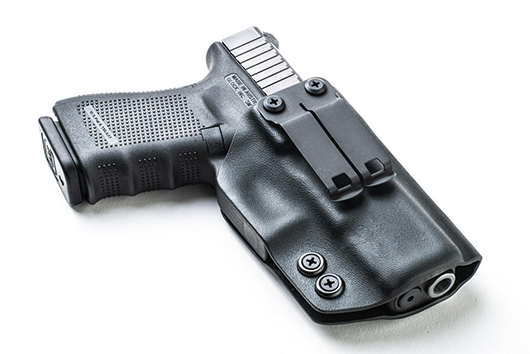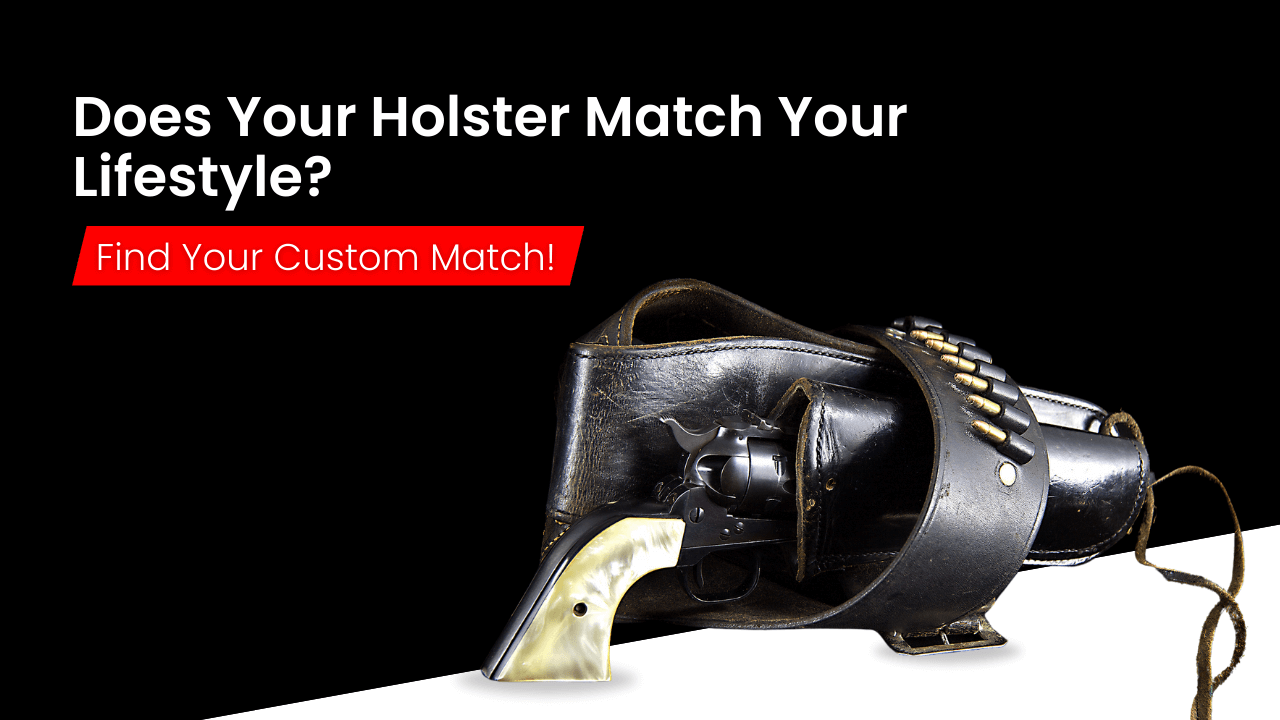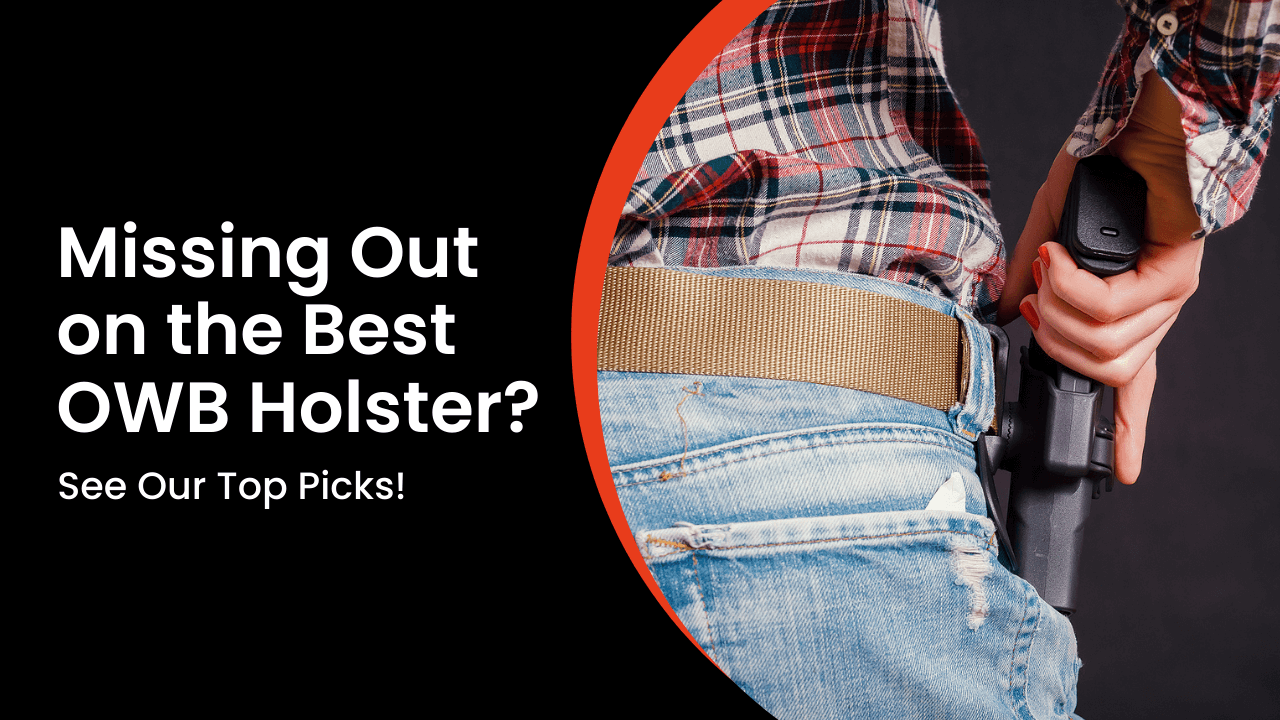What are the Holster Recommendations for SIG Sauer P365?
Feb 22nd 2021

A high-quality holster is a critical accessory for the gun owner intent on carrying a firearm for self-defense. When selecting a holster, there are numerous criteria to navigate — e.g., different materials, retention, safety, and comfort — but which carry option also depends on your firearm choice. What is the best SIG Sauer P365 holster?
SIG Sauer P365
Introduced in 2018, the P365 is a striker-fired, recoil-operated semi-automatic pistol designed for deep concealment. What’s so unique about this weapon is that, despite being a Micro Compact, its magazine holds ten rounds of 9mm ammunition as standard. That’s four rounds more per magazine than the comparably sized Glock 43.
However, if you find that a capacity of 10+1 is not sufficient, you have several options. SIG offers 12- and 15-round magazines for the P365 to increase your firepower. If you’d prefer to keep the flush-fit standard-capacity magazine, you can always wear a magazine carrier.
IWB or OWB
When searching for a holster, your choice of carry gun will determine, in part, what kind of holster is most appropriate. OWB, or outside the waistband, is suitable for open carrying compact and full-size service weapons and carrying firearms concealed under clothing. However, for a highly concealable weapon such as the P365, you need a more discreet option.
IWB (inside the waistband) is the preferred choice for deep concealment, especially regarding ultra-compact firearms. It allows you to carry your weapon hidden under a T-shirt, which is advantageous in warmer climates.
Carry Positions

Other than IWB and OWB, which are specific ways of carrying a waistband holster, there’s also the question of where to carry the pistol on your person. Ideally, you should carry your firearm on you and not in an off-body location, such as your vehicle.
Even though the P365 is lightweight and compact, you should avoid carrying it in a purse or handbag. Aside from rendering the weapon less accessible in an emergency, most thieves or muggers know that those accessories are most likely where you would keep a self-defense weapon.
Some of the most popular carry positions for concealed firearms include:
- Strong side: On or behind your right hip if you’re right-handed, your left hip if you’re left-handed, these are the default options that balance access and speed. It also allows you to blade your support side toward the target, keeping an assailant away from your weapon. Unfortunately, it can also be difficult to draw from when seated, such as in a vehicle.
- Appendix: Carrying your pistol at 12 or 1 o’clock is one of the most accessible, and thus fastest, positions to draw from but requires caution due to the direction in which the muzzle is pointed.
Holster Materials
A holster for the SIG should be comfortable for all-day carry. When gun owners think of comfort in the context of concealed carry, they tend to think of leather holsters. While it’s true that leather holsters are often very comfortable to wear and soften with regular use, molding to the body comes at the expense of long-term durability. Kydex isn’t as soft to the touch and doesn’t have as much give in it, but a pliable holster has its downsides.
Leather can wear out over time, becoming less rigid. Too much wear can affect retention and safety, causing the holster to hold the gun less firmly and to complicate one-handed reholstering. If the holster’s mouth becomes loose, the holster won’t grip the firearm securely, meaning that it could fall out under strenuous use. If the holster is particularly soft, it can deform, requiring that you use your support hand to keep it open when reholstering your firearm.
If you use a particularly soft type of leather, such as chamois, the material may also enter the trigger guard on reholstering, activating the trigger and causing an unintentional discharge. While dangerous to begin with, this can be potentially fatal with appendix holsters. For these reasons, Kydex is the superior material for concealed carry, especially for the appendix carrying holsters.
Comfort
Although leather is thought of as being more comfortable, this can depend on several factors, including the holster’s design. While harder and stiffer, Kydex is also less likely to stick to wet skin or rub uncomfortably. A well-made Kydex holster should also conform to your body.
One feature that helps with comfort is a sweat guard. Also called a sweat shield, this is where the holster material covers the pistol’s slide, preventing contact with your skin or the clothing next to it. This helps to protect the gun’s slide from perspiration, which can accelerate corrosion. If you’ve been firing the gun, it can also protect you against the hot slide.
When practicing fast draws, the slide’s grasping grooves, which help you rack the weapon, can be abrasive. The sweat guard minimizes the damage that this can cause.
Safety
Aside from the rigidity of Kydex, which can allow for more reliable one-handed reholstering and can minimize the risk of loose material entering the trigger guard, there’s another feature that you should seek when selecting a suitable holster. That’s a covered trigger guard. When you reach for your firearm and place your hand on the pistol grip, your finger should not be able to enter the trigger guard. This can help prevent mishaps, especially when drawing your weapon under stress.
Holster Retention
If you’ve seen the word “retention” used in the context of gun holsters, it refers to the ability of your holster to retain your firearm securely. This is one of the most important reasons to wear a holster — it keeps your firearm where it needs to be so that it’s available to you when you need it.
Some concealed carry holsters use active-retention systems to hold your firearm securely. These can range from locking mechanisms to thumb breaks. Unfortunately, these kinds of systems can complicate your draw stroke, slow you down when you need your weapon quickly, or both.
By precisely molding to the intricate external surfaces of your firearm, Kydex holsters use friction to hold a pistol firmly in place. Holster manufacturers provide adjustable retention via screws on the rear. If you need the holster to hold your gun more tightly or more loosely, you can adjust it accordingly to find the perfect retention level for you.
Tighter is more secure but slower to draw from. Looser is less secure but also requires less force to retrieve your weapon. It’s up to you which is the more essential quality.
Attachment Methods
While retention usually refers to the holster’s ability to hold your gun, it can also refer to how the holster attaches to your belt or clothing. If you opt for a paddle holster, the holster will attach using a thin panel that fits over your pants or belt, staying in place using friction.
This isn’t as secure as some other methods, but the chief advantage is convenience — you can easily remove and attach the holster. As a result, paddle holsters are a popular choice among law enforcement, particularly plainclothes officers.
Other types of holsters use belt clips or belt loops to attach to your belt securely. This is less convenient to remove but is far less likely to slip or fall out.
Final Thoughts
What holster is right for you will depend on the kind of firearm you’re carrying, and for highly concealable weapons, such as the SIG Sauer P365, an IWB Kydex holster is one of the best options available. At Incognito Concealment, we take everything regarding concealed carry seriously — it’s our passion. If you’d like to talk to us about what kind of holster to buy that best suits your needs, give us a call at (586) 999-5820.











